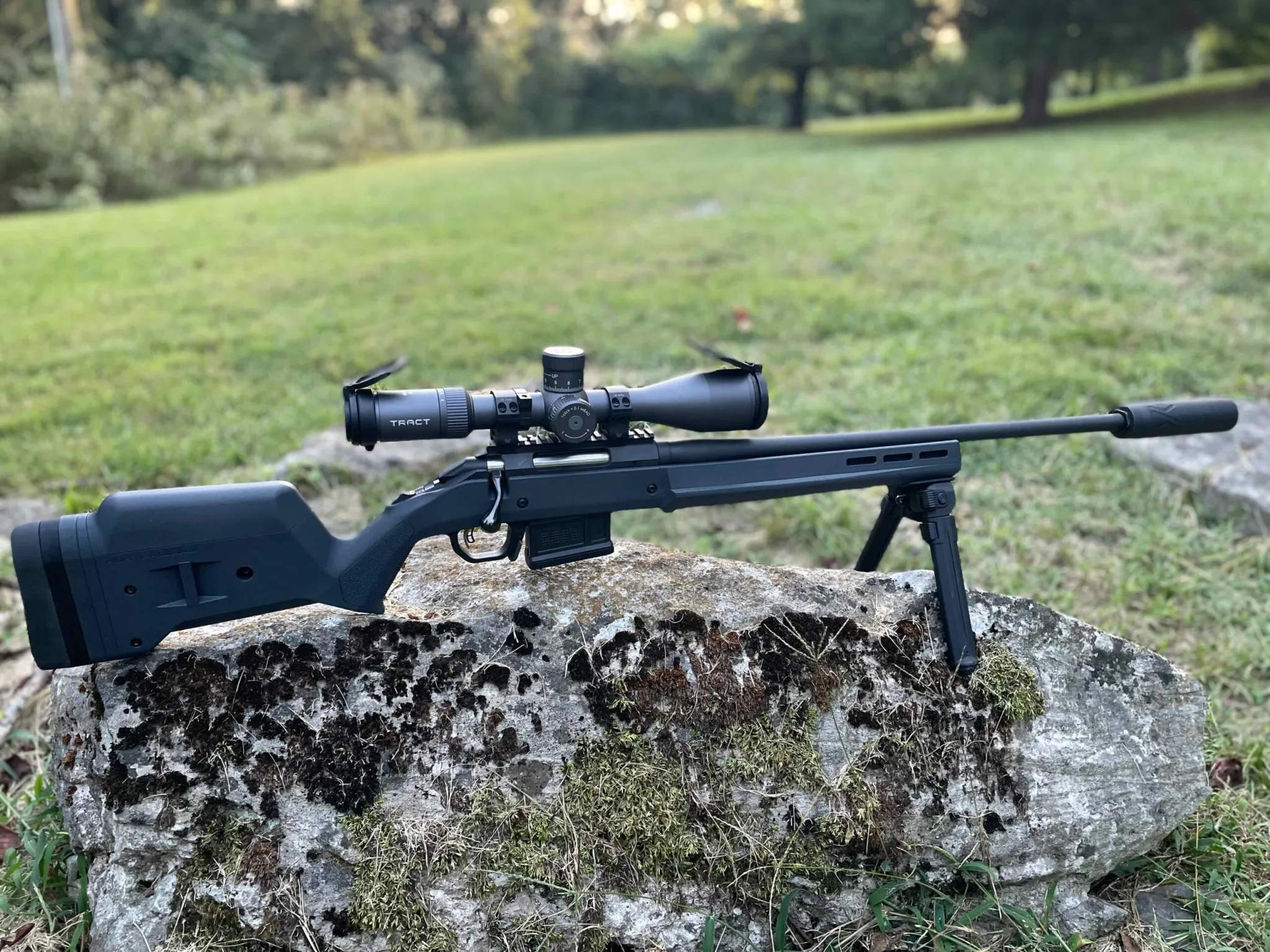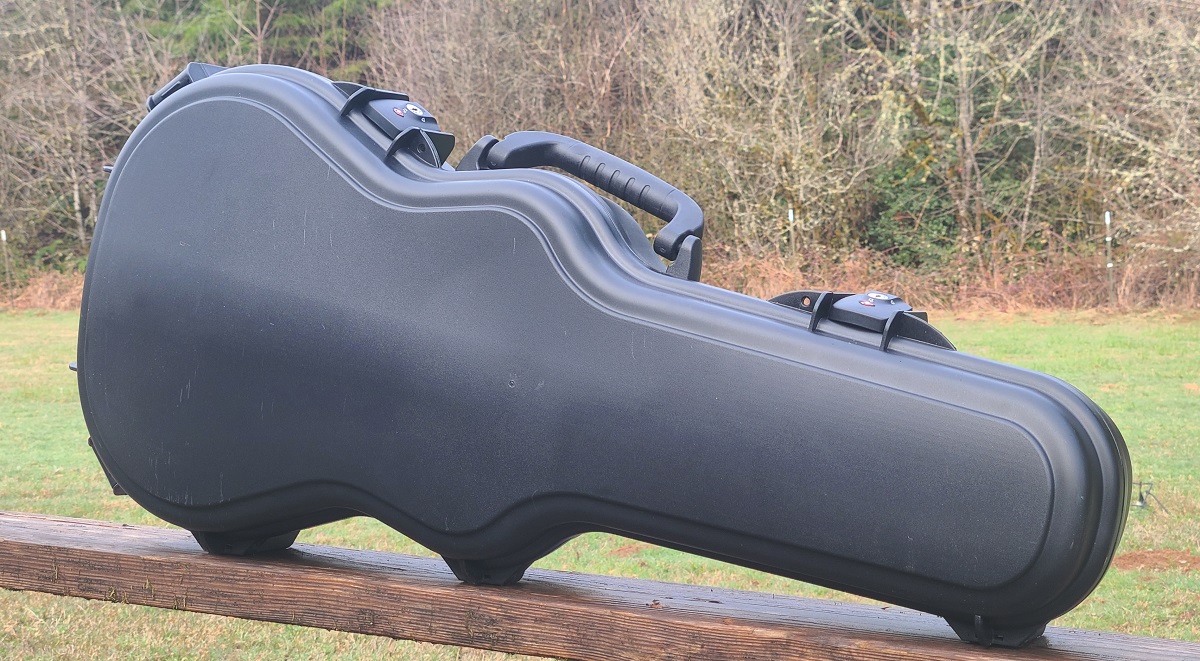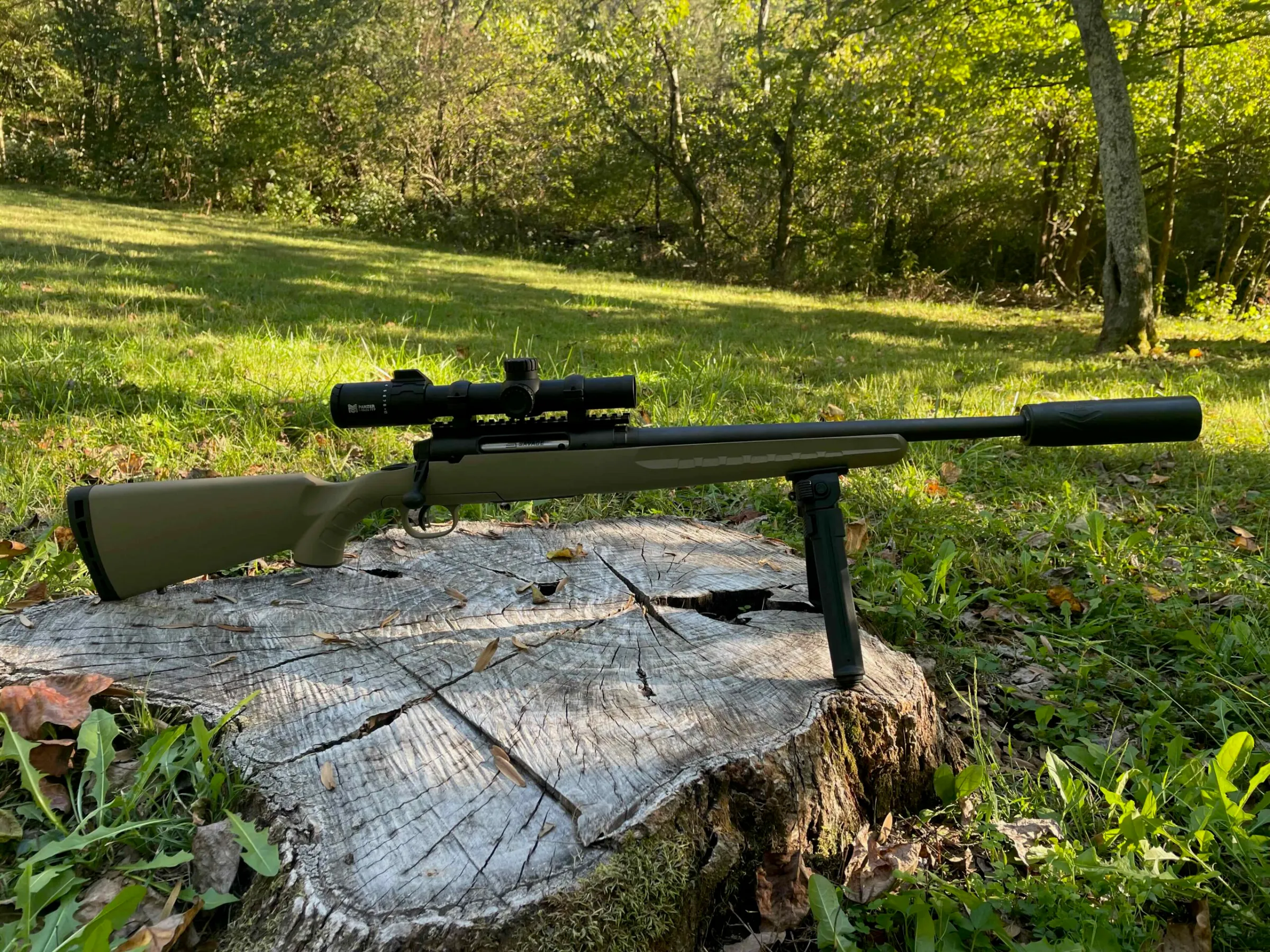Long-range precision shooting demands attention to numerous variables, from wind conditions to bullet drop.
However, one often overlooked factor can significantly impact accuracy: thermal mirage through suppressors.
This phenomenon, while subtle, can mean the difference between hitting and missing at extended ranges, particularly in competitive shooting environments where precision is paramount and rapid shots are common. Hunting hogs, coyotes or prarie dogs can also present fast shooting scenarios.
Understanding Thermal Mirage
Thermal mirage occurs when heat waves rising from a hot surface distort the shooter’s sight picture through the scope. With suppressors, this effect is amplified due to the rapid heating of the suppressor body during firing. As rounds pass through the suppressor, the internal baffles absorb and dissipate significant thermal energy, creating a column of heated air that can persist for extended periods.
The science behind thermal mirage is straightforward but its effects are complex. As the suppressor heats up, it transfers thermal energy to the surrounding air, causing it to become less dense. This creates a gradient of air density between the scope and the target. Light passing through these different density layers bends slightly, similar to how a straw appears bent when placed in a glass of water.
For precision shooters, this manifests as a shifting or wavering sight picture, making it challenging to maintain consistent point of aim when looking through their scope. It’s also worth noting that mirage can come from a hot barrel from rapid strings of fire, but suppressors typically heat up more quickly than barrels.
Impact on Accuracy
At distances beyond 300 yards, even minor visual distortions can translate to point of impact shifts. The effect becomes more pronounced as ambient temperature increases and with rapid strings of fire.
Competitive shooters often report vertical stringing of shots, with groups opening up progressively as the suppressor heats during rapids strings of fire. This vertical dispersion typically follows a predictable pattern but can be difficult to compensate for without proper understanding and training.
Several variables influence the severity of suppressor-induced mirage. Ambient temperature plays a crucial role, with higher temperatures exacerbating the effect.
Wind conditions can either help dissipate the heat or, in some cases, create additional challenges by pushing the heat waves across the line of sight. The suppressor’s design, material composition, and thermal mass also contribute to how quickly it heats up and how effectively it dissipates heat.

Material Considerations
Modern suppressors utilize various materials and construction methods to manage heat. Titanium suppressors, while lighter, tend to heat up more quickly than their steel counterparts. Some manufacturers incorporate heat-treated alloys or specialized coatings to improve heat dissipation.
However, even the most advanced materials cannot eliminate thermal mirage entirely – they can only help manage its effects. This is one reason why some competitive shooters have preferred using muzzle breaks rather than suppressors for competition.
The shooting industry continues to develop solutions for managing suppressor mirage. Some manufacturers now offer suppressors with integrated heat management features, such as enhanced ventilation or specialized baffle designs. Flow through suppressors tend to heat up more slowly as well. Others focus on scope mounting solutions that position the optic higher above the bore axis, reducing the impact of rising heat waves.
Practical Solutions for Long-Range Shooters
Experienced shooters employ several strategies to minimize the impact of suppressor mirage. One common approach is the use of suppressor covers, though these must be carefully selected to balance heat management with the potential for point of impact shifts due to added weight.
Modern suppressor covers are lightweight and quite effective in managing heat and mirage. Others opt for mirage bands – simple fabric wraps that help break up the rising heat waves.

Success in managing suppressor mirage often comes down to recognition and adaptation. Shooters must learn to identify when mirage is affecting their sight picture and adjust accordingly.
This might involve timing shots to allow for cooling, adjusting position slightly to shoot through less disturbed air, or compensating for known point of impact shifts at specific temperatures.
Competition Considerations
In competitive environments, time constraints often prevent waiting for complete suppressor cooling between strings. Shooters must therefore develop strategies to maintain accuracy despite increasing mirage effects. This might include adjusting hold-off points throughout a string or planning stage execution to minimize the impact of heat buildup.
Different shooting environments require different approaches to mirage management. Indoor ranges, for instance, may experience more pronounced effects due to limited air circulation. Outdoor competitions in varying weather conditions demand flexible strategies, as what works on a cool morning may prove ineffective during afternoon heat.
As precision shooting continues to evolve, understanding and managing thermal mirage becomes increasingly important. The growing popularity of suppressors in competitive shooting has driven innovation in both suppressor design and auxiliary equipment.
Shooters who master the technical aspects of mirage management gain a significant advantage in precision shooting disciplines.
Wrapping Up
Thermal mirage through suppressors represents a unique challenge in precision shooting, but one that can be effectively managed through understanding, proper equipment selection, and practiced techniques.
Success lies in recognizing the phenomenon’s impact and developing consistent strategies to minimize its effects.
As the shooting sports continue to advance, the ability to manage thermal mirage will remain an important skill for competitive and long-range shooters seeking to maximize their accuracy potential.








Put a vent rib on it.
Only shoot in a rain storm.
Take the thing off and use ear muffs.
cure for suppressor ‘Thermal Mirage’ for precision shooters for long distance competition: Take the suppressor off the gun silly.
😁